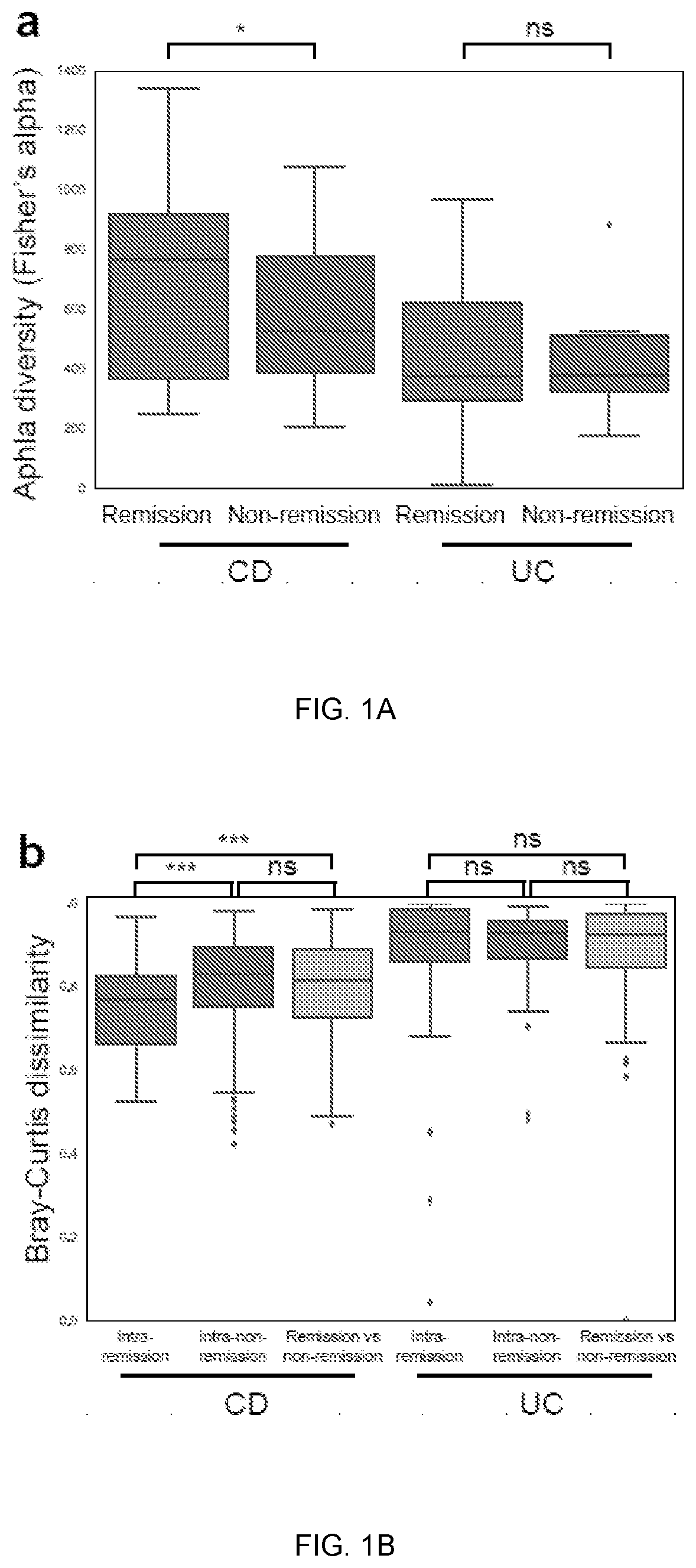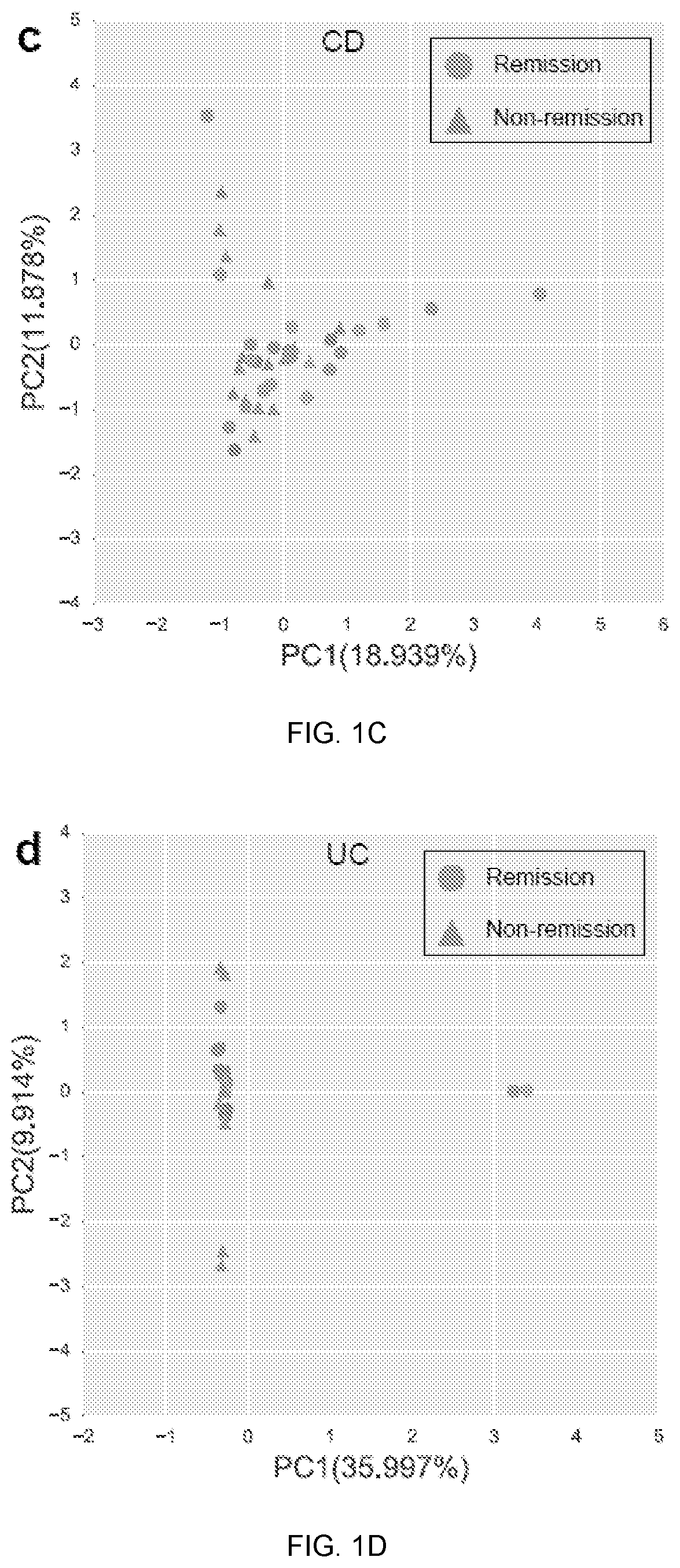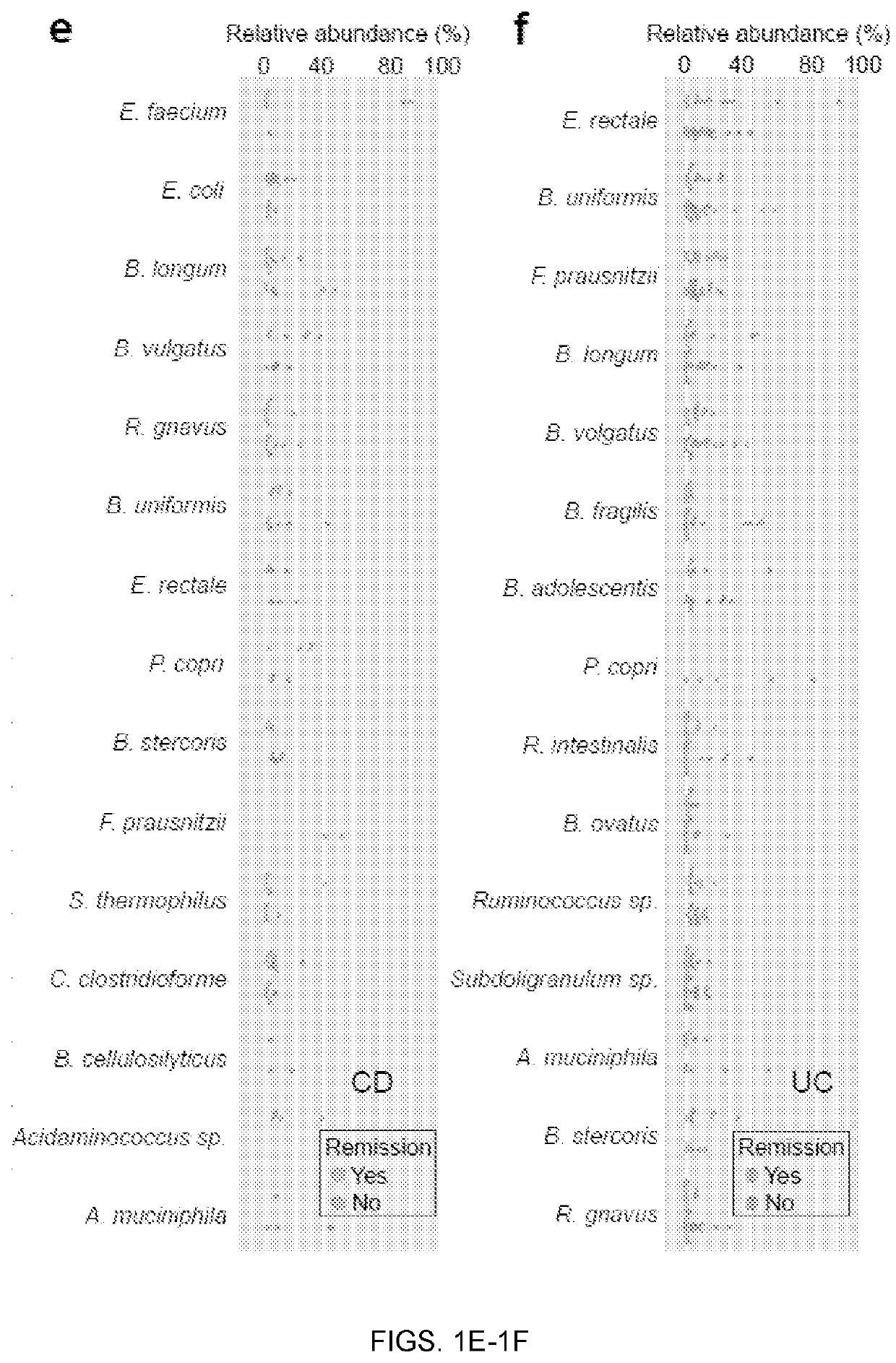Gut microbiome function predicts response to Anti-integrin biologic therapy in inflammatory bowel diseases
a technology of inflammatory bowel disease and gut microbiome, which is applied in the field of gut microbiome and predictive responses to inflammatory bowel disease (ibd), can solve the problems of relying on clinical factors and yielding disappointing results, and achieve the effect of increasing the baseline level and the likelihood of responding to uc treatmen
- Summary
- Abstract
- Description
- Claims
- Application Information
AI Technical Summary
Benefits of technology
Problems solved by technology
Method used
Image
Examples
example 1
[0068]Study population. The study included 85 patients with IBD (43 UC, 42 CD) with a mean disease duration of 13 years at the start of therapy. Just under half of the patients were on concomitant therapy with immunomodulators (42%). Most had previously failed an anti-TNF agent. The mean HBI and SCCAI at baseline were 6 and 5.9 respectively with a mean CRP of 13.2 mg / L (range 0.1-140). At week 14, 31 patients met Applicants' primary outcome of clinical remission. At week 54 (n=71), 35% of patients remained in remission. Patients who attained remission were likely to have had disease for a shorter duration, more likely to have a diagnosis of CD and less likely to have had prior anti-TNF exposure (p<0.05 for all) (FIG. 9).
[0069]Baseline metagenomic composition and remission at week 14. Community alpha-diversity at baseline was significantly higher in CD patients who achieved remission at week 14 (q<0.1, student's t-test; FIG. 1a). This did not achieve statistical significance in UC th...
example 2
n
[0079]The gut microbiome is a key determinant of initiation and propagation of luminal inflammation in IBD (Becker et al., 2015; Forbes et al., 2016; Gevers et al., 2014; Knights et al., 2013; Kostic et al., 2014). Here, Applicants describe the microbial composition and structure from a large cohort of IBD patients initiating vedolizumab therapy (Shelton et al., 2015). Applicants demonstrate associations between baseline taxonomic composition and functional pathway abundance and clinical remission at 14 weeks and demonstrate the utility of predictive models incorporating both clinical and microbiome data in predicting clinical remission. Applicants also hypothesize that trajectory of early changes in the microbiome may be a marker of response to treatment in IBD.
[0080]There have been few studies of longitudinal changes in the gut microbiome with drug treatment in IBD. Shaw et al. characterized 19 children with CD and 4 with UC, showing dysbiosis at baseline that correlated with lum...
example 3
ods
[0087]Vedolizumab cohort and outcomes. This study was nested within a longitudinal prospective IBD cohort at Massachusetts General Hospital (Prospective Registry of IBD Study at MGH (PRISM)). Details of this cohort have been published previously (Ananthakrishnan et al., 2014; Shelton et al., 2015). In brief, the PRISM registry is open to all adult patients with IBD seeking care at the MGH Crohn's and Colitis center. This nested study was a prospective inception cohort of patients initiating vedolizumab for refractory luminal CD or UC, often in the setting of prior anti-tumor necrosis factor α (anti-TNF) failure. Characteristics of the included patients initiating vedolizumab therapy is presented in FIG. 9. All patients initiating vedolizumab as part of their routine clinical care were eligible for inclusion without an a priori fixed sample size for recruitment. Patients with an ileostomy or J-pouch were excluded as disease activity scores could not be reliably calculated. Most pa...
PUM
| Property | Measurement | Unit |
|---|---|---|
| RA | aaaaa | aaaaa |
| concentration | aaaaa | aaaaa |
| metagenomic structure | aaaaa | aaaaa |
Abstract
Description
Claims
Application Information
 Login to View More
Login to View More - R&D
- Intellectual Property
- Life Sciences
- Materials
- Tech Scout
- Unparalleled Data Quality
- Higher Quality Content
- 60% Fewer Hallucinations
Browse by: Latest US Patents, China's latest patents, Technical Efficacy Thesaurus, Application Domain, Technology Topic, Popular Technical Reports.
© 2025 PatSnap. All rights reserved.Legal|Privacy policy|Modern Slavery Act Transparency Statement|Sitemap|About US| Contact US: help@patsnap.com



